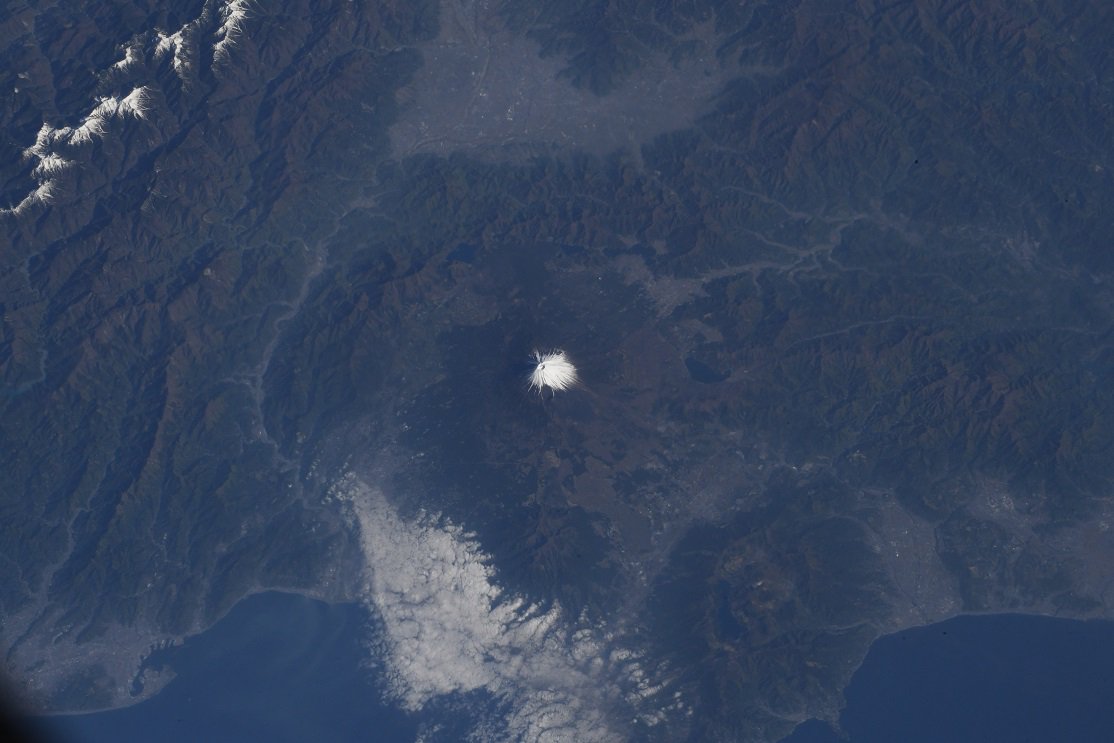[:ja]金井宣茂宇宙飛行士がISSから撮影した春の富士山です。画像からもわかる様にだいぶ雪が溶けてきました。

富士山は標高3776mの活火山で、懸垂曲線の山容を有した玄武岩質成層火山で構成され、その山体は駿河湾の海岸まで及びます。古来霊峰とされ、特に山頂部は浅間大神が鎮座するとされたため、神聖視されました。噴火を沈静化するため律令国家により浅間神社が祭祀され、浅間信仰が確立されました。2013年には「富士山-信仰の対象と芸術の源泉」の名で世界文化遺産に登録されました。
春の、今日の、富士山の地上の様子はこちらです。

参考文献: Norishige Kanai’s Tweet
ウェブ地球儀で地球俯瞰画像を見る: LiVEARTH
[Earthview Wonders] No.493: Mt. Fuji in Spring🇯🇵
Astronaut Norishige Kanai captured from ISS Mt. Fuji. As can be seen from the image snow has melted to the current level.

Mt. Fuji is the highest mountain in Japan at 3776m, and is an active stratovolcano that last erupted in 1707–1708. Mt. Fuji’s exceptionally symmetrical cone is a well-known symbol of Japan and it is frequently depicted in art and photographs, as well as visited by sightseers and climbers. It was added to the World Heritage List as a Cultural Site in 2013.
Today’s Mt. Fuji is as follows.

Reference: Norishige Kanai’s Tweet
See earthview photo gallery with web-globe: LiVEARTH[:en][Earthview Wonders] No.493: Mt. Fuji in Spring🇯🇵
Astronaut Norishige Kanai captured from ISS Mt. Fuji. As can be seen from the image snow has melted to the current level.

Mt. Fuji is the highest mountain in Japan at 3776m, and is an active stratovolcano that last erupted in 1707–1708. Mt. Fuji’s exceptionally symmetrical cone is a well-known symbol of Japan and it is frequently depicted in art and photographs, as well as visited by sightseers and climbers. It was added to the World Heritage List as a Cultural Site in 2013.
Today’s Mt. Fuji is as follows.

Reference: Norishige Kanai’s Tweet
See earthview photo gallery with web-globe: LiVEARTH[:]